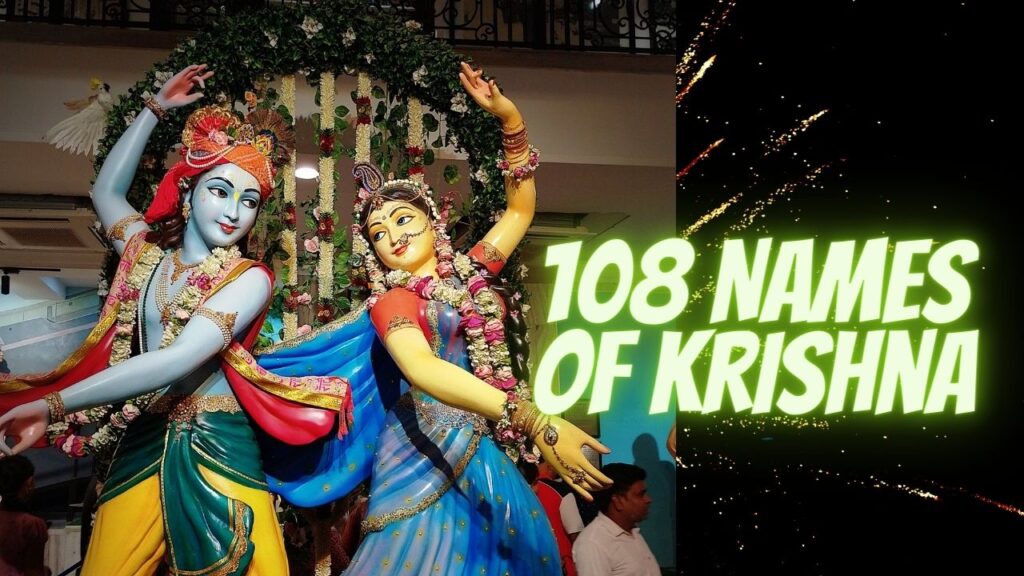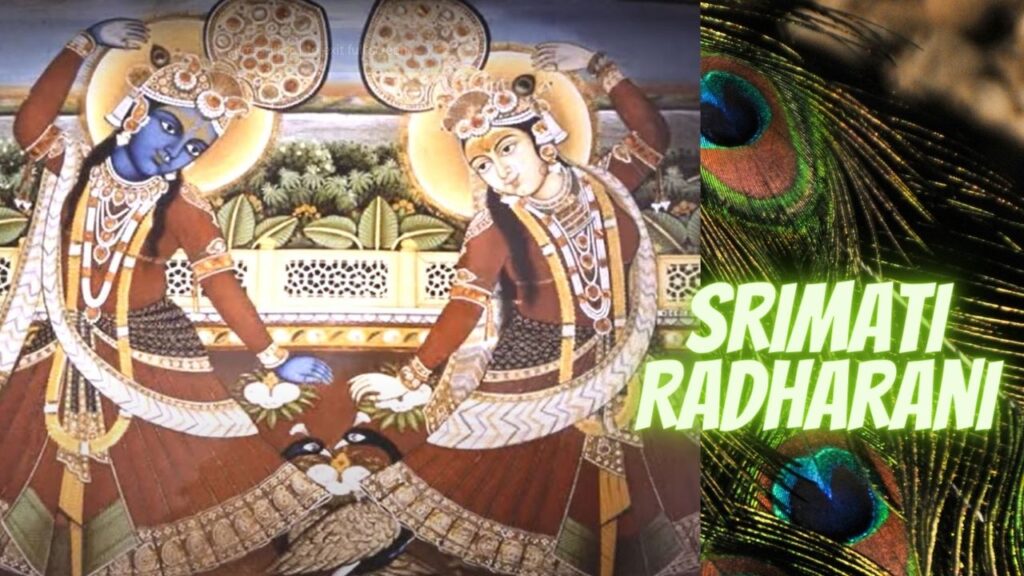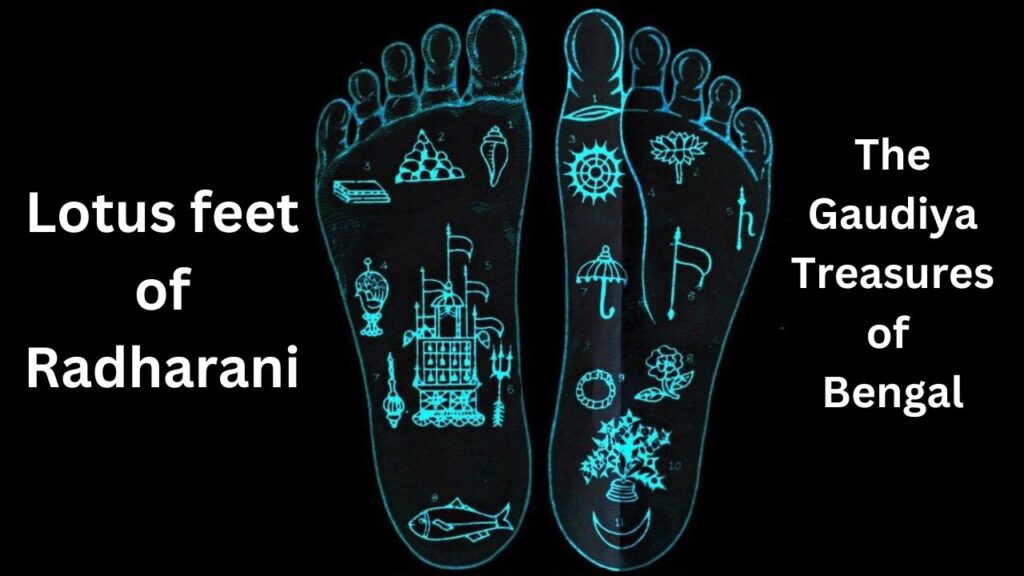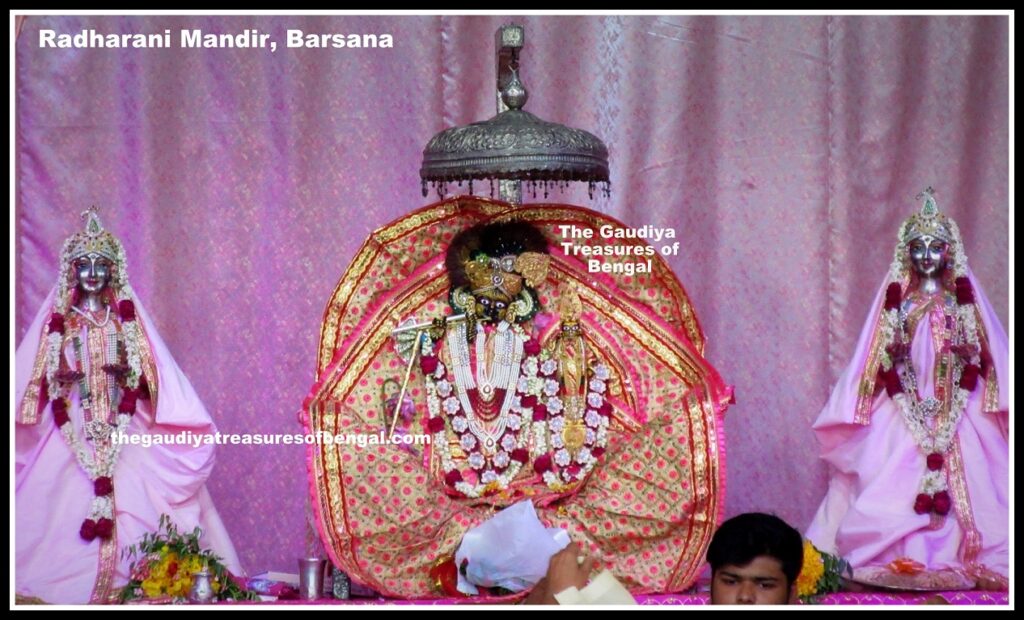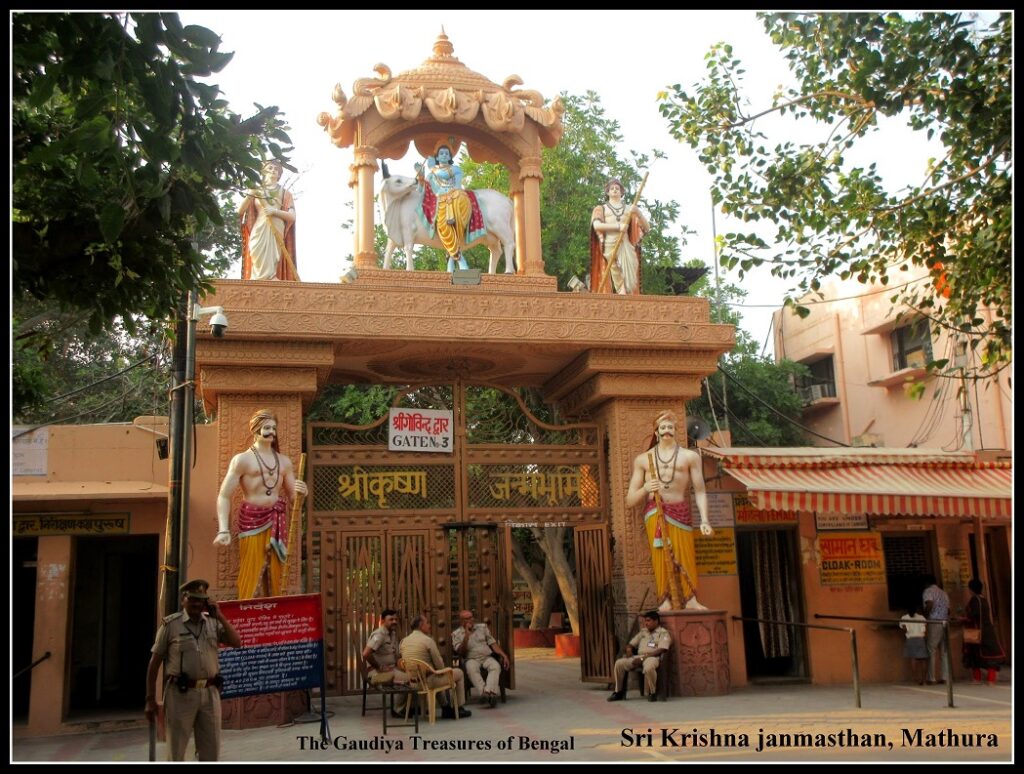
Brahmand Ghat is located about 15 Kilometers southeast of Mathura in the legendary town of Gokul. It falls within the precincts of Mahavan, the eighth sacred forest of Vraja Mandala. Located about 5 Kilometers from the ancient palace of Nanda Maharaja in Gokul (Nanda Bhavan), ‘Brahmanda Ghat’ is a tranquil stretch along the bank of river Yamuna. Brahmand Ghat was once a part of Nanda Maharaja’s courtyard and as infants, Krishna, Balarama, and other cowherd children came here to play. Brahmand Ghat is the site where infant Krishna, after consuming mud while playing with his friends, revealed the entire cosmos in his mouth, much to the bewilderment of his foster mother Yashoda. Hence the name of the place is Brahmand Ghat, literally meaning, the universe. Overseeing the Brahmand Ghat is a beautiful temple of Krishna, who is lovingly named ‘Sri Brahmand Bihari jiu’. It is said that one who takes the darshan of Krishna at Brahmand Ghat, or one who takes bath in its waters, or one who eats mud at this sacred place, at once receives ecstatic love for Krishna. Adi Varaha Purana glorifies Mahavan as follows –
Maha vanam castamam tu sadaiva hi mama priyam
Tasmin gatva tu manuja indraloke mahiyate
–
The eighth forest of Mahavan is very dear to me. One who goes there is worshiped on Indra’s planet.
Sri Chaitanya Mahaprabhu had visited Mahavan during His visit to Vraja Mandala and relished the pastimes of Krishna. Lord Chaitanya had manifested His ecstatic pastimes at this place.

Bhavabeshe prabhu nritya-geetite magna haila
Kripa kari sarva chitta akarshana kaila
Chaturdike dhaya loka dekhiya prabhure
Haiya adhairja Hari Hari dhvani kare
(Bhakti Ratnakara)
–
Sri Chaitanya manifested His singing and dancing pastimes here (at Mahavana) and mercifully enchanted the hearts of everyone. People rushed from all around to behold Mahaprabhu and chanted the holy names of Hari in ecstasy.
Sri Sanatana Goswami had also visited Mahavana and over here he had attained the divine darsana of Madana Gopal who displayed His pastimes as a cowherd boy to Sanatana.
